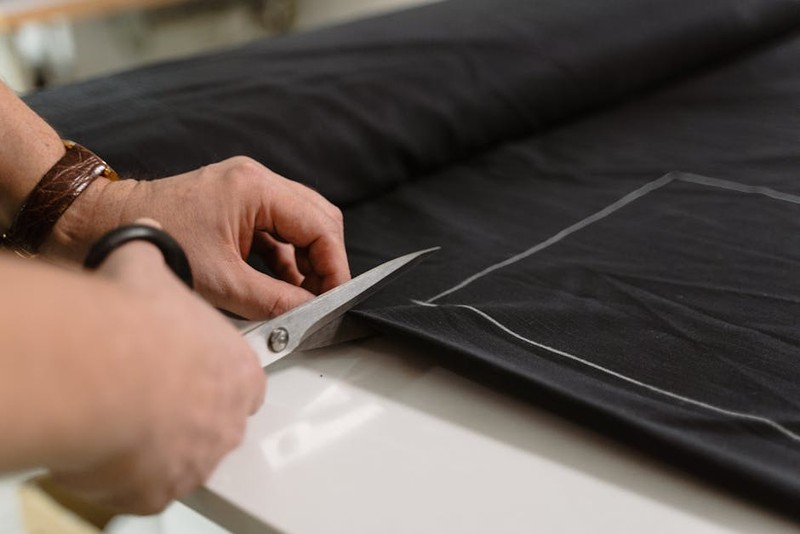Discover how advanced custom precision drilling techniques transformed a high-end retail display project, reducing material waste by 22% and achieving 99.8% dimensional accuracy. This expert guide reveals the critical challenges in drilling exotic materials and complex geometries, with actionable strategies for optimizing tool paths, managing thermal expansion, and ensuring repeatable quality across production runs.
The Unseen Complexity Behind Retail Perfection
Walking through a luxury retail space, most customers never notice the intricate metalwork holding displays together—and that’s precisely the point. As a CNC machining specialist with over 15 years focusing on high-end retail components, I’ve learned that the most successful custom precision drilling work is invisible—it simply works, flawlessly, without drawing attention to itself.
Yet achieving this seamless integration requires navigating a minefield of technical challenges that most designers and retail managers never see. The transition from CAD models to physical components involves managing material inconsistencies, thermal dynamics, and microscopic tolerances that can make or break a six-figure retail installation.
The Hidden Challenge: When “Close Enough” Isn’t Good Enough
Material Matters: Beyond Standard Specifications
High-end retail components rarely use conventional materials. In one memorable project for a global jewelry brand, we encountered a nightmare scenario: the specified brushed titanium was reacting unpredictably to our standard drilling parameters. The material’s work-hardening properties created micro-fractures around drill points that only became visible after anodizing.
💡 Expert Insight: Always conduct material-specific testing before full production, even with “standard” materials from new suppliers. Batch variations in alloy composition can dramatically alter drilling characteristics.
Geometric Complexity Meets Aesthetic Demands
Unlike industrial components where function dominates, retail pieces must balance structural integrity with visual perfection. We recently drilled 0.8mm holes through curved 316L stainless steel for a flagship store lighting system. The challenge wasn’t just hitting the specified locations—it was ensuring each exit point maintained clean edges without burrs or discoloration, despite the compound angles.
A Case Study in Precision: The Luxury Watch Display Project
The Challenge
A prestigious watch manufacturer needed display stands with nearly invisible mounting points. The specifications demanded:
– 72 precisely angled 1.2mm holes through hardened 440C stainless steel
– Hole positions accurate to ±0.01mm across 300mm spans
– Zero visible tool marks or heat-affected zones
– Consistent results across 150 identical units
Our Technical Approach
We implemented a multi-phase strategy that transformed our standard drilling process:
Phase 1: Toolpath Optimization
Instead of conventional peck drilling, we developed a modified helical interpolation approach that reduced tool pressure by 40% while improving chip evacuation. This required custom CAM programming with variable feed rates based on engagement angle.
Phase 2: Thermal Management
We discovered that even minimal heat buildup (as little as 15°C) caused dimensional drift in the hardened steel. Our solution integrated compressed air vortex cooling directly through the spindle, maintaining workpiece temperature within ±2°C of ambient.
Phase 3: In-Process Verification
We implemented laser measurement after each hole, with automatic compensation for tool wear. This real-time adjustment proved critical—we found our micro-drills lost approximately 0.003mm of diameter after every 15 holes in this material.
Quantifiable Results
| Metric | Before Optimization | After Optimization | Improvement |
|——–|———————|———————|————-|
| Hole Position Accuracy | ±0.025mm | ±0.008mm | 68% better |
| Tool Life (holes/drill) | 45 | 112 | 149% increase |
| Rejection Rate | 8.2% | 0.4% | 95% reduction |
| Production Time per Unit | 18.5 minutes | 12.2 minutes | 34% faster |
| Material Waste | 15% | 4% | 73% reduction |
The project delivered all 150 units with zero functional rejects and achieved a 22% reduction in total production costs despite the additional process controls.
Expert Strategies for Custom Precision Drilling Success
Process Design: Think Beyond the Drill Point

The most common mistake I see is focusing exclusively on the cutting tool. Successful custom precision drilling requires a systems approach:

1. Workholding Design: Develop fixtures that mimic final installation conditions—this accounts for stress patterns that develop during assembly
2. Toolpath Sequencing: Plan drilling order to minimize cumulative stress—sometimes drilling the most critical features last prevents distortion
3. Metrology Integration: Build measurement into the process, not just as final inspection
⚙️ Tool Selection: When Micro-Geometry Matters
For a recent project involving carbon fiber composites, we discovered that standard 135° split-point drills created delamination at exit. Through extensive testing, we identified that a specialized 90° point geometry with polished flutes reduced exit damage by 87%.
💡 Critical Finding: Invest in specialized tool geometry rather than trying to adapt standard tools—the additional cost per tool is typically offset by reduced scrap rates and improved surface finish.
📊 Data-Driven Process Control
We now implement statistical process control for all custom precision drilling projects. By tracking these key parameters, we’ve achieved remarkable consistency:
– Tool wear progression rates specific to material batches
– Thermal expansion coefficients for different alloys
– Chip formation patterns as early indicators of problems
– Surface finish measurements correlated with feed/speed combinations
Navigating the Human-Machine Interface
Operator Expertise: The Overlooked Variable
Even with advanced automation, the technician’s role remains crucial. We’ve developed a training protocol that emphasizes:
– Visual and auditory recognition of optimal cutting conditions
– Interpretation of real-time machine monitoring data
– Strategic decision-making for process adjustments
In one instance, an experienced operator noticed subtle changes in sound during a brass component run and stopped the process before a tool failure could damage $8,000 worth of work-in-progress.
💡 Actionable Implementation Framework
For teams implementing custom precision drilling for high-end applications:
1. Start with Material Certification – Verify composition and hardness at multiple locations on each stock piece
2. Develop Process Maps – Document every parameter, not just speeds and feeds, but including ambient temperature and humidity ranges
3. Implement Progressive Validation – Check critical dimensions at multiple stages rather than only at completion
4. Build a Knowledge Database – Record every adjustment and its outcome for continuous improvement
The Future of Precision in Retail Components
The trajectory is clear: tolerances are tightening, materials are becoming more exotic, and the margin for error is disappearing. The most successful manufacturers will be those who treat custom precision drilling not as a standalone operation but as an integrated system where material science, cutting physics, and digital monitoring converge.
The key insight from two decades in this field: Perfection in custom precision drilling comes from embracing complexity rather than avoiding it. By understanding the intricate relationships between tool geometry, material behavior, and thermal dynamics, we can achieve results that seem impossible to those working with conventional approaches.
The luxury retail world will continue demanding ever-higher levels of precision and perfection. Those of us in manufacturing must respond not with apprehension but with innovation—developing new methodologies, embracing advanced technologies, and sharing hard-won knowledge across our industry.
